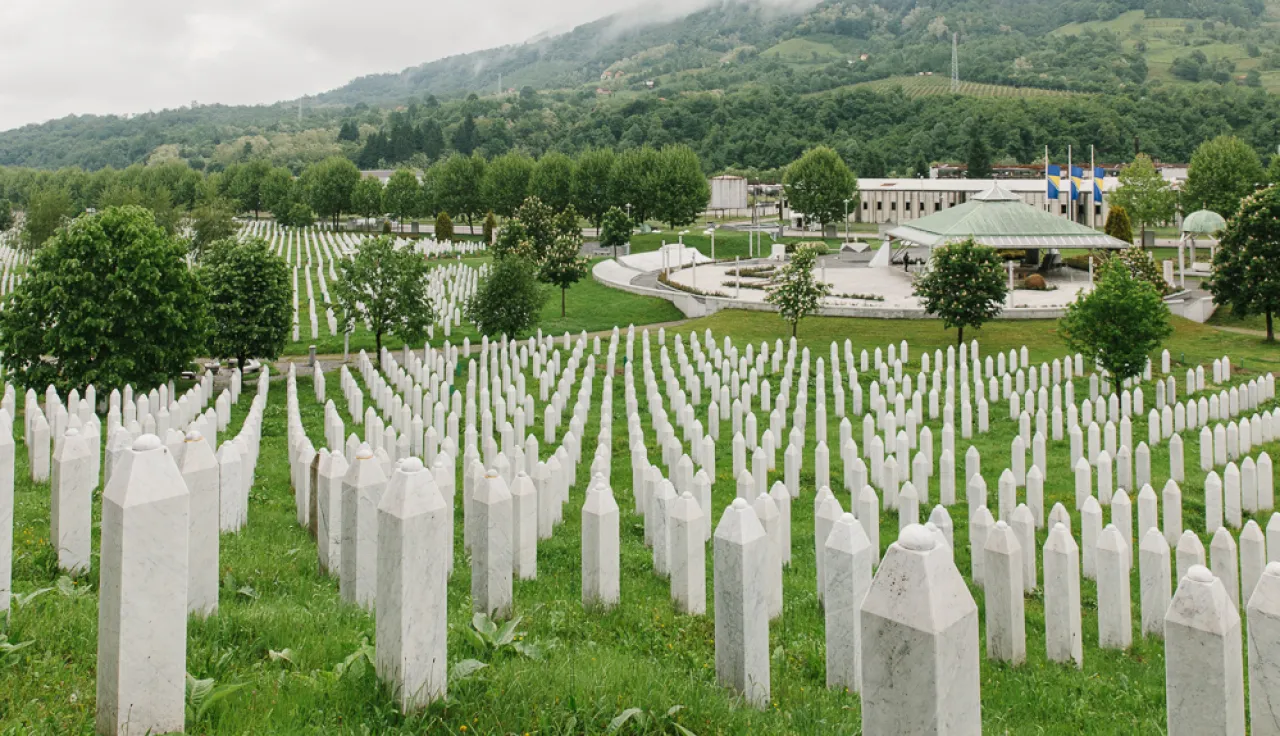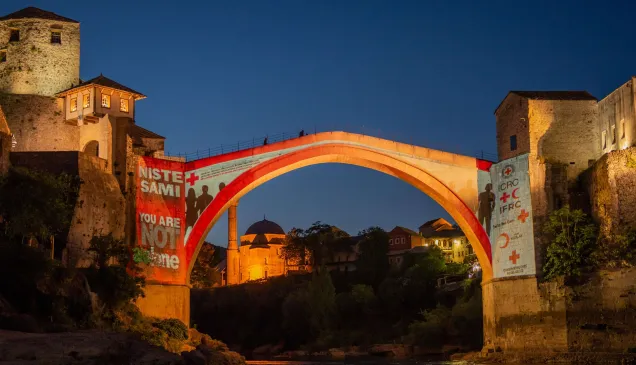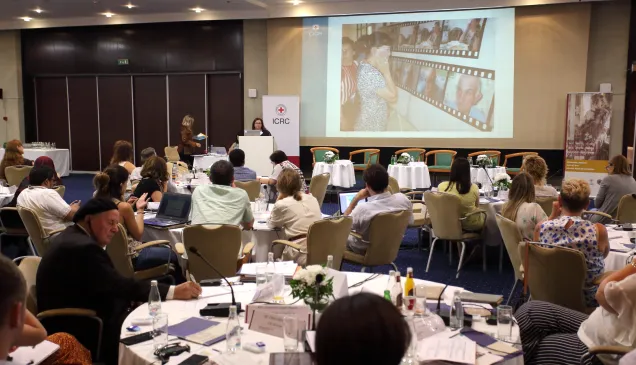Srebrenica: 30 Years of Remembrance and Search for Missing Family Members Continues

It has been three decades since Srebrenica, a small town in eastern Bosnia, became a lasting symbol of profound tragedy and enduring sorrow. In July 1995, a total of 8,372 people were killed and thousands were displaced. Hundreds remain missing. Empty spaces between existing tombstones are left for them at Srebrenica Memorial Centre in Potočari, so they can be buried next to close family members once found and identified.
On 11 July 2025, seven people who were identified over the past 12 months will be laid to rest at the Centre. Among them are two young men, Senajid Avdić and Hariz Mujić, who were just 19 years old when they were killed. Thirty years later, they will be buried side by side in the soil of Potočari. The oldest among those being buried is Fata Bektić, who was 67 years old at the time of her death. She is also the only woman to be buried in this year’s ceremony.
Over time, the number of people identified and buried annually is decreasing. From several hundred each year in the past, the number has declined to fewer than a dozen being buried in Potočari in 2025. Since 1992, the ICRC Delegation in Bosnia and Herzegovina has been present and responding to humanitarian needs during the conflict, and contributing to the search for the missing following the end of the conflict.
To improve the possibility of finding and identifying the missing, ICRC experts have reviewed archives from the International Residual Mechanism for Criminal Tribunals in The Hague and many other international archives since 2018. Though painstaking and involving thousands of witness statements, military notes, and documents, the information collected through this vital work has been analyzed and shared with the relevant authorities to support their ongoing efforts to search for the missing.
The ICRC still works closely with families of the missing, who have faced prolonged suffering from not knowing their loved ones’ fate, while often confronting social, psychological, legal, and economic challenges.
Together with partners, particularly the Red Cross Society of Bosnia and Herzegovina and many family associations, the ICRC has provided psychosocial support to families, advocating for their right to know, and raising awareness of their needs—not only in Bosnia and Herzegovina but throughout the Western Balkans.
Overall, more than 9,600 people remain missing from the 1990s conflicts in the region, including over 7,600 from Bosnia and Herzegovina alone according to the Missing Persons Institute of Bosnia and Herzegovina.
It is easy to get overwhelmed with the numbers but let us not forget individuals. Let's not forget the person whether in Srebrenica or any other place, who was once loved, who was once cared for, and who had their own hopes and dreams for the future — a future different than the one that befell them.
Remembering the Nine ICRC Employees Killed in Srebrenica 30 Years Ago
More than 8,000 people from Srebrenica lost their lives in July 1995. Among them were nine ICRC colleagues. Their remains have been exhumed from mass graves and identified over the past decades. Today, we remember and pay tribute to them, sharing our loss with all who mourn loved ones.
- Bajro Buljubašić, exhumed from a mass grave; identified on 8 June 2011.
- Mevludin Džanić, exhumed from a mass grave; identified on 15 May 2006.
- Samir Halilović, exhumed from a mass grave; identified on 24 March 2005.
- Džemail Haskić, exhumed from a mass grave; identified on 27 August 2009.
- Rudolf Hren, exhumed from a mass grave; identified on 13 November 2009.
- Salko Hublić, exhumed from a mass grave; identified on 8 February 2005.
- Muhamed Mehanović, exhumed from a mass grave; identified on 8 March 2005.
- Ahmo Mujić, exhumed from a mass grave; identified on 29 June 2010.
- Husein Šabanović, exhumed from a mass grave; identified on 13 May 2008.
The Srebrenica Memorial Centre is their final resting place.
Learn more about our work in Bosnia and Herzegovina
- “My father’s absence was a source of endless pain”: Forensic identification helps families of the missing
- Key findings on supporting and strengthening work with relatives of missing persons
- 25 years after the sorrow of Srebrenica, 8,372 lives remembered
- Bosnia and Herzegovina: Workshop on providing better support for families of missing



